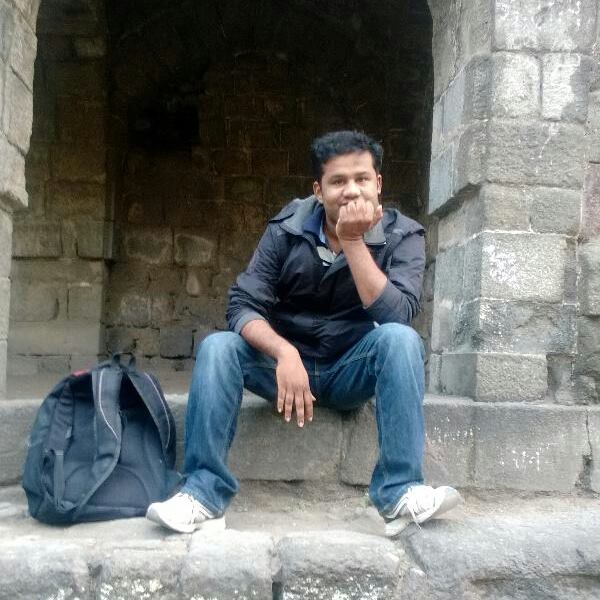Arvind Kumar (JNU)
 Amid the numerous speculations, finally the Bhartiya Janata Party (BJP) and its allies have arrived on a seat sharing formula for the upcoming Bihar assembly election. The BJP has kept the lion’s share by retaining 159 seats out of 243 whereas its three principal allies namely the Lok Janshakti Party (LJP), the Rashtriya Lok Samata Party (RLSP) and the Hindustani Avam Morcha (HAM) have got 40, 23 and 21 seats respectively. In addition to this formal arrangement, 5 candidates of the HAM will also contest on the BJP’s election symbol.
Amid the numerous speculations, finally the Bhartiya Janata Party (BJP) and its allies have arrived on a seat sharing formula for the upcoming Bihar assembly election. The BJP has kept the lion’s share by retaining 159 seats out of 243 whereas its three principal allies namely the Lok Janshakti Party (LJP), the Rashtriya Lok Samata Party (RLSP) and the Hindustani Avam Morcha (HAM) have got 40, 23 and 21 seats respectively. In addition to this formal arrangement, 5 candidates of the HAM will also contest on the BJP’s election symbol.
The announcement of this seat sharing formula has raised further questions instead of providing a ‘universal solution’ to the already existing ‘perennial questions’. Nowadays, the job of election pundits has become more difficult because in addition to decoding the logic of the ‘big brother’ keeping the larger share of about 2/3rd of the seats and adjusting three junior partners within the remaining 1/3rd seats, they have to also answer questions like-is this formula just? How has the BJP managed to get its key allies to agree on this formula? Which political party is the biggest beneficiary of this arrangement? What might be the future consequences of this formula?
Now, looking at the first question, the popular answer is that the BJP has calculated its share of seats as per the performance in the last general election. Despite agreeing with this layman analysis, my argument is that there is something in India’s electoral system per se which gives BJP an advantage to have such an agreement. It needs to be noted that our constitution makers adopted the First Past the Post (FPTP) whose intrinsic nature is to produce a bi-party system. Since Independence, India’s party system has attracted a great deal of foreign scholarship for its exceptional character, where in contradiction to its intrinsic nature, the rule has produced a multi party system which is a feature of the proportional representation system.
The studies on elections have voluminous answers to this dilemma. Instead of going through that I would borrow my argument from Rajni Kothari’s most celebrated text ‘The Congress System’ in which he advocates the dual nature of the grand political party where the opposition and the ruler both lie within the party itself. I argue that the above mentioned nature of the Congress Party has prevented the country from adopting the path directed by the electoral rule. Now, the Congress System is a matter of the past; therefore, there are very few things which will prevent the electoral rule from producing the desired result. In addition to many other factors, the electoral system also contributed to the emergence of the BJP as a first pan India party in a very different sense. This kind of pan India expansion gave moral & ethical advantage to the BJP to have such an agreement in Bihar.
The answer to the interesting question: whether this seat sharing formula is just or unjust, needs analysis of the fairness of the agreement. An in-depth examination of the agreement indicates that it is not only quantitatively unjust but also qualitatively. The unfairness is very much implicit in the agreement because apart from keeping the lion’s share of seats, the BJP has given those seats to its junior partners where the winnability factor is least. It has been reported that the Bihar BJP has unilaterally declared the name of the candidates for certain constituencies where the NDA has higher winning possibility. This move of Bihar BJP unit came immediately after its national leadership announced the share of the seats so that any moral claim by allies can be minimized. The irony of the announcement is that the RLSP chief Upendra Kushwaha was yet to reach Patna. Apart from this, the BJP has to render its consent on the names of the candidates of allied parties but it doesn’t work the other way round.
Another important puzzle that needs to be resolved here is that instead of giving five more seats to the HAM, why has the BJP decided to project five HAM candidates on its own electoral symbol? The commonsensical interpretation of this puzzle is that there might be competition between Upendra Kushwaha and Jiten Ram Manjhi for not to be at the bottom. In order to minimize the competition, the BJP would have come up with this formula. Instead of solely relying on this commonsensical interpretation, this puzzle needs exploration of all possible meanings because it has the potential to answer other questions too. On pretext of further exploration, the exercise generally turns into throwing out the baby with the bathwater; therefore, to avoid this, the objective of the exploration would not be rejection of the earlier one but an addition to the same.
Having said that, BJP’s strategy to file 5 HAM candidates on its own electoral symbol needs careful examination. I would say this is not possible without an examination of the dawn of Jiten Ram Manjhi in Bihar politics. Elsewhere, I have elucidated the seed of the rise of Manjhi which lies in the submergence plan of the offspring of ex-Janata Party. Since the JDU and the RJD were supposed to merge in the proposed Samajwadi Janata Dal, this created huge tension among various sub-regional and sub-caste leaders who saw this plan as permanently destroying their political careers. To carve out a new possibility, these leaders needed a political leader who has a pan-Bihar presence; nobody else could have been a more suitable candidate than Jiten Ram Manjhi. Keeping in mind the submergence plan, they pushed Manjhi to revolt against Nitish Kumar. The original plan was that if the JDU submerges then Manjhi will re-originate it. If RJD submerges, Rajesh Ranjan alias Pappu Yadav will follow the same path. The capturing of either electoral symbol of the RJD or the JDU was also the original motto of the plan. When Manjhi saw delay in the submergence process, he started frequently meeting Prime Minister Narendra Modi so that the process could be accelerated.The tragedy of this story is that instead of the submergence only limited alliance has happened.The rest of the story need not be re-narrated since it is already in public domain.
The new political development in Bihar politics due to the rise of Manjhi was de-establishing already existing permutations and combinations because its final outcome was turning into creating chaos. The disturbance of existing equilibrium resulted in soft polarization in the Bihar BJP where many contenders for chief minister-ship emerged. Meanwhile one pole of the Bihar BJP turned the tables by winning the heart of MLAs & ex-Ministers who were supporting Manjhi. These leaders first formed a backdoor alliance with the BJP which further forced the former to join hand with the NDA.
Unlike Ram Vilas Paswan, Manjhi comes from the Mahadalit community which is not only numerically abysmal but also politically least aware. The economic and social marginalization of this community has prevented emergence of any middle class which can financially support Manjhi. Therefore, Manjhi has very limited options except to rely on his existing supporters and sympathizers. Furthermore, the BJP was also unwilling to take him in the party because of his unpopularity among caste Hindus. Manjhi had only the option to launch his own political party and then have an alliance with the NDA. It has been reported that the BJP leaders too had advised him for doing the same. In addition to this, there is another interpretation to the whole episode that the BJP wanted another Dalit leader in its fold so that it can reduce the pre-election and the post-election bargaining capacity of Ram Vilas Paswan. The previous track record of Paswan in terms of switching alliances heavily supports this argument. The tussle between Manjhi and Paswan indicates that the political strategy of the BJP has been successful.
Now coming to our central problem – why has the BJP decided to file 5 HAM candidates on its own electoral symbol rather than giving 5 more seats to the HAM? Let us find out what could be possible explanations? First, the BJP would have been forcing Manjhi to ensure the candidateship of these five candidates since they might have played a crucial role in bringing Manjhi to NDA’s fold. The second, the BJP has the post election scenario in its mind where non availability of clear cut majority may increase bargaining capacity of Manjhi, Paswan, and Kushwaha. The past track records of Manjhi also suggest that he may turn around in case of a hung assembly by returning to the Grand Alliance. The BJP has faced the latter experience in Maharashtra where the Shiv Sena had a brief confrontation during formation of the government. If the proposed 5 HAM candidates win on the electoral symbol of the BJP, legally they would be treated as BJP MLAs rather than HAM. In case Manjhi tries to carve out new possibilities in the post election scenario, he would be checked with the help of these MLAs, the BJP would have partial control of the HAM. The fear of the anti defection law will always be haunting these MLAs which will force them to act as per dictates of the BJP instead of Manjhi.
In other words, I would say the BJP has already created two poles in the HAM where one pole would be loyal to Manjhi whereas the other pole might be forced through the constitutional means to not be loyal. Manjhi would not have any legal means to direct such MLAs who would be elected on BJP’s electoral symbol. His incapacity to take any legal measure against such MLAs might not only make a mockery of him but also project him as a weak leader. The saddest chapter of the story is that anyone can predict the possibility of disintegration in the HAM in the upcoming future, the seeds of which lie in this alliance per se. If this happens, Manjhi would disprove the famous saying ‘we belong to history; history does not belong to us’ since he himself is part of the team which has sown the seed of disintegration.
~~~
Arvind Kumar is a research scholar at the Centre for Political Studies, JNU. He is also a social activist who takes interest in the Dalit movement. His articles have been published in various Hindi publications including Jansatta, Amar Ujala, Jansandesh Times, DNA, Sablog (Monthly) and Forward Press.










